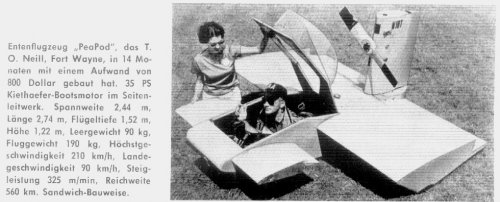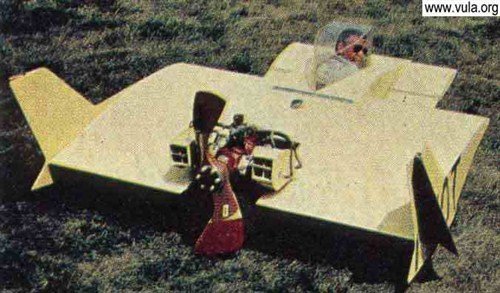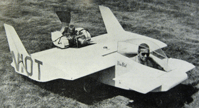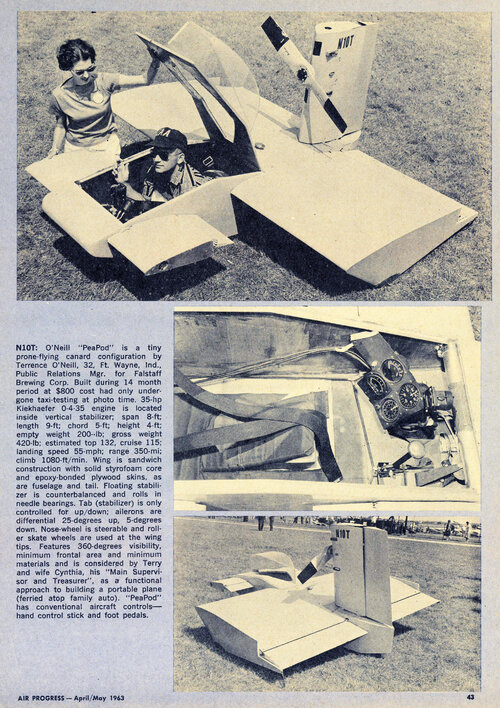- Joined
- 11 March 2006
- Messages
- 8,606
- Reaction score
- 3,045
Shown in "Der Flieger", August 1964 (mentioned in Flight, too : http://www.flightglobal.com/pdfarchive/view/1962/1962%20-%202274.html)
probably had chances of being one of the smallest manned aircraft ever flown ... if it actually flew ! In Flight it is still remarked as "not yet flown".
Span 2.44 m, length 2.74 m, powered by a 35 hp boat engine, built for about 800,- US $.
probably had chances of being one of the smallest manned aircraft ever flown ... if it actually flew ! In Flight it is still remarked as "not yet flown".
Span 2.44 m, length 2.74 m, powered by a 35 hp boat engine, built for about 800,- US $.




